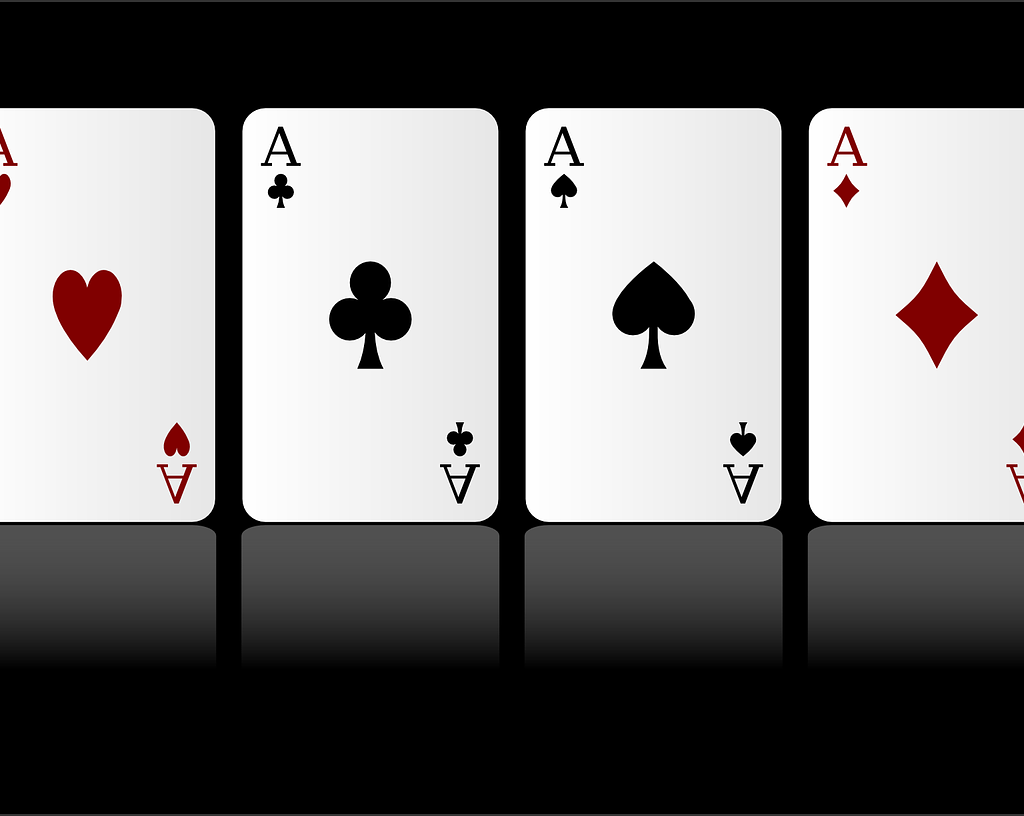
If you’re looking for a fun challenge to test your skill in Java, creating a computer poker game makes for an interesting one. While not a particularly large or complex kind of project, a Java poker game will push you to conceive of a design step by step and manage some intricate little details in the process. That makes for good practice, particularly for those who are relatively new to the language and looking for ways to improve.
In this piece, we won’t provide a coding blueprint for a poker game in Java (though you can find such blueprints online). Rather, we’ll walk through the steps involved in a project like this, so that you can have the beginnings of an outline for your own attempt.
Step 1 — Create Your Deck
Creating a 52-card deck is essentially the foundation for your project. Remember too that these cards need to be separated into 13 different values (representing 2 through 10, three face cards, and the Ace) for each of four different suits (Clubs, Diamonds, Hearts, and Spades). All 52 of these individual cards should be built into an array, from which the game can effectively be built out.
Step 2 — Shuffle the Deck
This can be done in different ways, but you essentially want to build in a function that randomizes the array of card values you’ve created, ensuring no duplicates. The program should effectively “rebuild” the array such that the cards are all there, but assume a randomized order to ensure the fairness and chance inherent to poker. At that point, your game will be ready to deal cards to players, which is where some variance comes into play. You’ll need to determine how many hands are being dealt, as well as what sort of poker game you want this to be. If it’s a five-card draw, cards need only be dealt directly to players (in quantities of five). If it’s Texas Hold’em or Omaha, there will also have to be communal cards dealt.
Step 3 — Dealing
This is where it’s important to remember that simplicity is best, and randomness will take care of making the game authentic. It is possible to code in probabilities, almost rigging your game to work as math dictates it should. Poker.org lists the exact probability of a player receiving any given hand (0.000154% for a Royal Flush, 0.0015% for a Straight Flush, and so on), and there are ways of plugging those numbers into your game such that dealing adheres to the percentages. While this will be the temptation for some though, the truth of the matter is that it’s unnecessary. Those numbers don’t dictate what must happen in poker, so much as what will happen on average, over time, with true, random dealing. So your program need only assign each player’s card in sequence simply by identifying a random value from 0 to 51 (making for all 52 values) within your array of cards. The probabilities will take care of themselves.
Step 4 — Assessment
It’s with this step that a poker program truly has to accomplish something that one doesn’t think of in a regular poker game, which is the assessment of players’ hands. When you play poker in person, players and/or a dealer recognizes hand values and winning hands and help the game to proceed accordingly. When you play an existing poker video game, of course, this all happens automatically. In building a program though, you need to code in functions enabling your game to recognize players’ combinations of cards. (A four-step poker game outline on Instructables.com has some helpful suggestions on how to go about this bit via loops, if statements, and while loops.)
Step 5 — Recording the Win
Following assessment, the program should also record and/or highlight the winning hand. This can be done in any number of ways, particularly if you choose to build in any sort of visual interface to the game. But there needs to be a means of identifying the winning hand – as well as moving chips accordingly to the winning player if you are building in any sort of faux betting system.
From that point on the game should be able to repeat as needed, shuffling the deck and dealing one hand after another. The result should be a fully functioning poker program in whatever variety of games you choose.
As mentioned, making all of the above happen in Java is a legitimate challenge even if it’s not a particularly massive project. Yet this is still the language to try it in. Despite some beginners’ preference for Python when it comes to personal projects, Business Insider identified JavaScript and Java as being particularly useful for gaming applications. We’d tend to agree and look at a project like this one as a good way to improve skills in Java – even if there are also ways to build poker applications in other languages.


![Python Loops and Functions: Complete Guide [With Examples]](https://blog.simplivlearning.com/wp-content/uploads/2020/03/0-100x70.jpg)